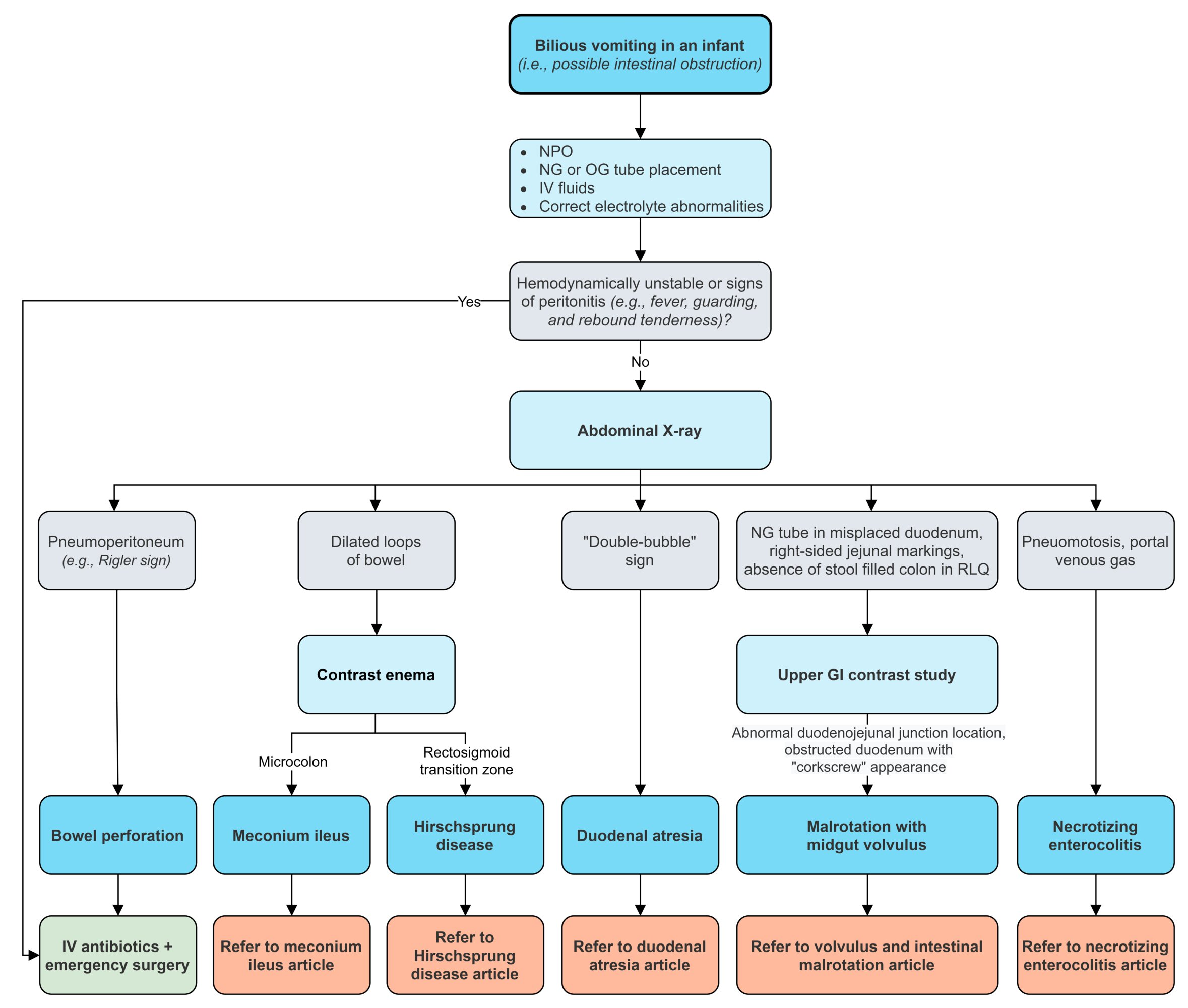Epidemiology
Etiology
- Intestinal bands/adhesions
- Intestinal malrotation: abnormal rotation of the bowel with abnormal fixation of mesentery to the posterior abdominal wall
- Megacolon
Pathophysiology
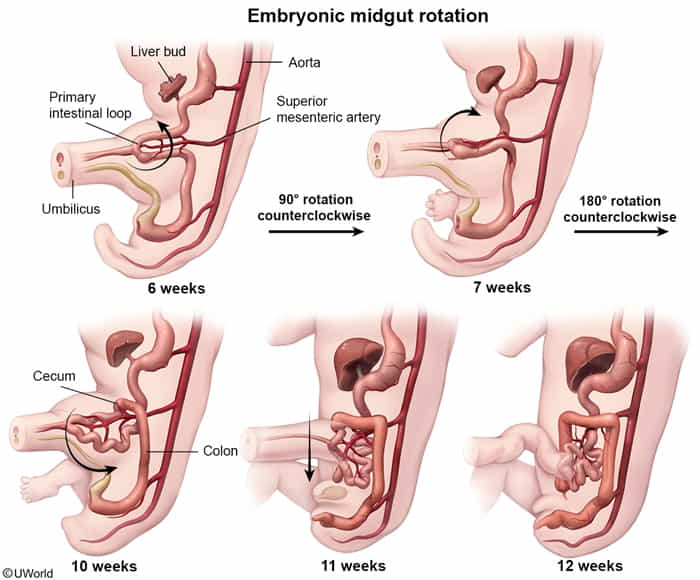
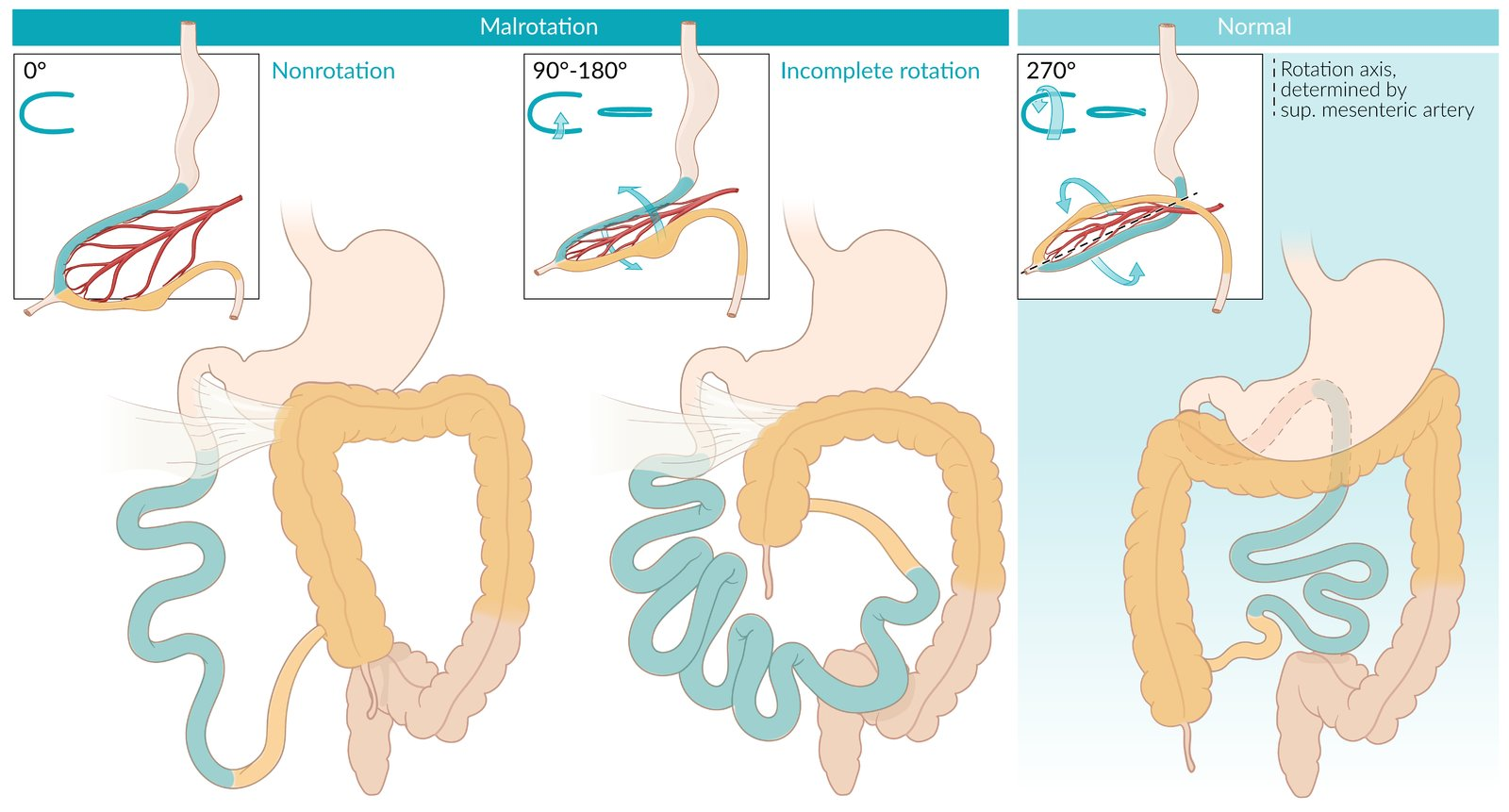
- Ladd’s bands, sometimes called bands of Ladd, are fibrous stalks of peritoneal tissue that attach the cecum to the retroperitoneum in the right lower quadrant (RLQ).
- Obstructing Ladd’s Bands are associated with malrotation of the intestine, a developmental disorder in which the cecum is found in the right upper quadrant (RUQ), instead of its normal anatomical position in the RLQ.
Clinical features
- Malrotation: mostly asymptomatic
- Midgut volvulus
- Bilious vomiting with abdominal distension in a neonate/infant
- Signs of bowel ischemia: hematochezia, hematemesis, hypotension, and tachycardia
Diagnostics
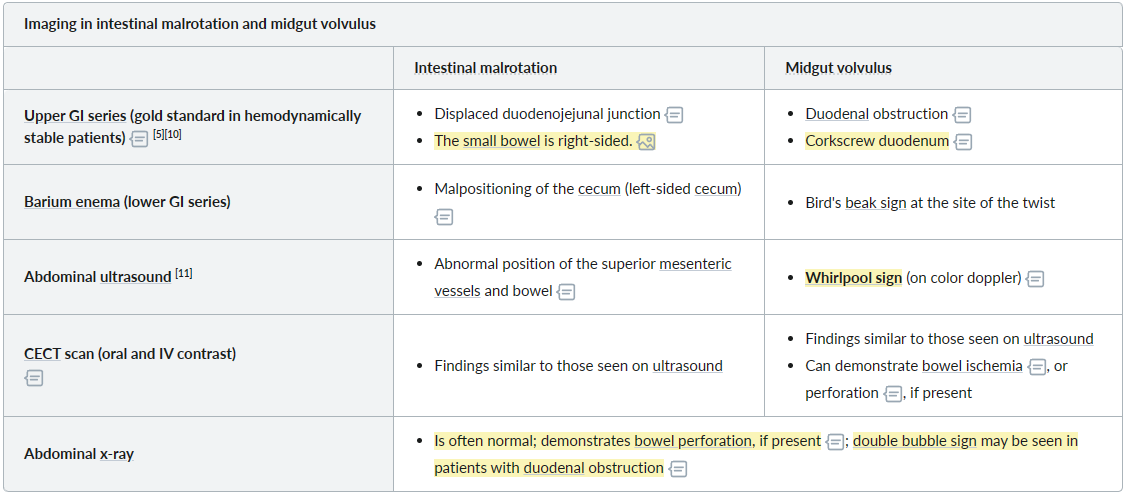
- Midgut volvulus: corkscrew appearance
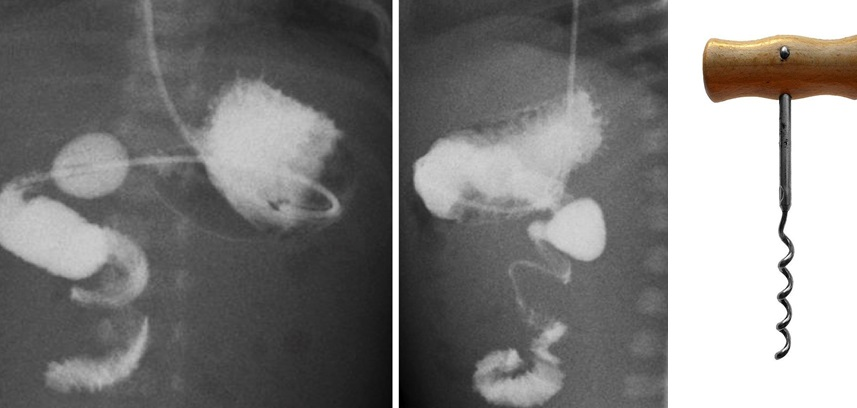
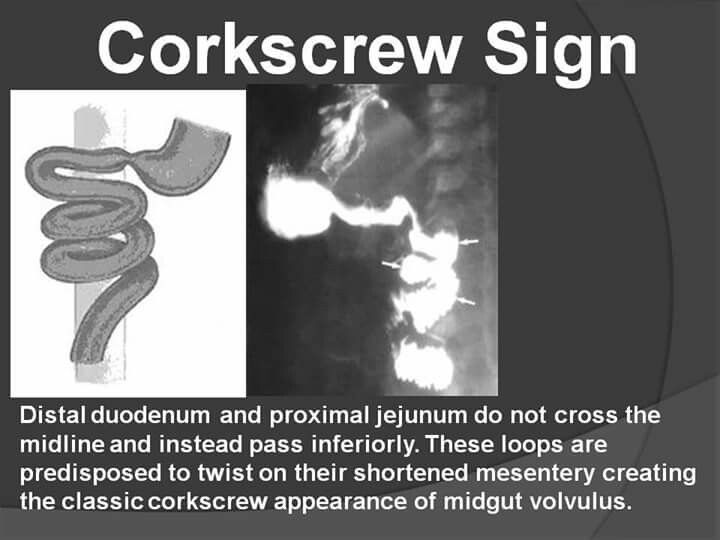
Differential diagnostics
Differential diagnostics
Link to original
